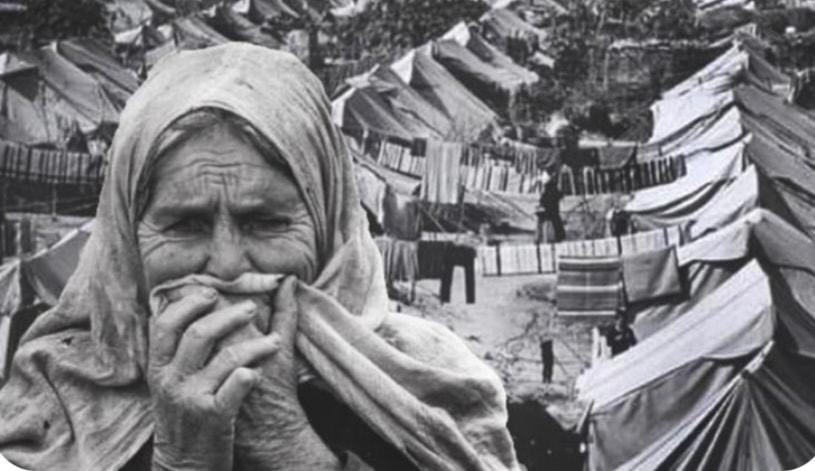Luna Whispering Wolf Public Statement The attempts to silence our people including myself as a "First Nation" woman and leader is in full force. As my ancestors thousands of years ahead of me I will stand stead fast to take my place to keep walking my path in a humble and good way without being attacked by the negative things that come upon my people and our tribes. WE ARE NOT A CONQURED PEOPLE WE ARE STILL HERE. Luna Whispering Wolf Cherokee Nation / Wolf Clan Mother I am reaching out to our #PowerOfThe7 and the International Community with a pure and humble heart.
I am not the kind of person to pre-arrange my words due to the fact my thoughts and feelings are not rehearsed. ( I say what I mean "Un-Sugar Coated" and I mean what I say ) I have been onto Twitter aka X since 2009. I have been through many happenings while having an account onto that platform. Being a voice for our "First Nation Tribes" and all our topics and issues to living through full blown Revolutions and Civil Wars in Egypt to visiting our relatives of Palestine in Gaza and the West Bank. To standing against police brutality way before the George Floyd issue to standing with my relatives in Standing Rock. To fighting stage 4 cancer and standing with my fellow Cancer Warriors. I walk my road very humbled but strong and I will never change the way ancestors guide me. As normal and being a fact. This man made world and the people in it with negative will create things still that are not created for my people. The intent is not made for us and our tribes to be involved. We are a threat because of the truth we bring. A truth that can put people into "CHECKMATE" by the masses. Yesterday after 15 years of being in full compliance with the rules and policies of Twitter aka X I was banned from the platform after attending and being invited to a X Space that was on the topic of UFO's and Tsul Kalu as we call it in Cherokee. There were some idea's that stories that did not make sense to me as a "First Nation" person and to not disrespect the host and cause a issue. I removed myself from the space and went along with my day. When I came back in my spare time to check through my account I was informed that my account was suspended. This automatically put me into a place of "What did I do wrong"? mode. Then after just a few minutes my acceptance of what has happened to our people for hundreds of years came to me through my ancestors to not fret over this. Nothing happens by accident. I want people to know about this wrong doing but I do not want my issue to effect others in a negative way. I am dealing with this and going through X's way of appeal just to let this platform know I know I have done nothing wrong. I have other ways to bring my experiences and voice as a First Nation Tribal Member and voices of others who are forced to be voiceless through my own platform and others. X is not the only one there are million who do not even use this platform. So I want no negative feelings for me or my situation. This is not the end for me and my voice will be out there in the public. THIS IS NOT THE END... THIS IS THE BEGINGINNG. This Website and Blog has been created and owned by me for years for a reason. This is the reason by what has happened with being suspended by X wrongfully to silence me and my people and our tribes. To ever negative is a thousand positive ways. BE THE CHANGE YOU WANT TO SEE... Luna Whispering Wolf Cherokee Nation / Wolf Clan Mother
0 Comments
Her tragedy remained hidden in the Israeli army’s archives for 54 years, recorded in military court testimonies She was abducted on Aug. 12, 1949, 66 years by Israeli soldiers near the Nirim military outpost in the Negev desert, close to the Gaza Strip. The unnamed Palestinian Bedouin girl, in her mid-teens, was then raped and executed.
Her tragedy remained hidden in the Israeli army’s archives for 54 years, recorded in military court testimonies and a single entry in former Prime Minister David Ben-Gurion’s diary, where he referred to it as a “horrific atrocity” in the early years of the state. In 2003, Israeli newspaper Haaretz obtained classified documents including the testimonies of the 20 soldiers involved in the case, and published an article in Hebrew on the account. It did not receive media attention. The girl was brought back to the outpost, where her clothes were pulled off. She was forced under the shower by the platoon sergeant. He washed her down with his own hands, while his fellow soldiers enjoyed the show. She was then taken into a hut and gang-raped by three soldiers. At about 5 p.m., they brought a barber to cut her hair short, after which she was forced to shower once more in front of the officer and sergeant. The second lieutenant ordered the soldiers to prepare for a party. Tables were set up, wine poured and food laid out. Platoon commander ‘Moshe’ gave his soldiers a pep talk on Zionism and the importance of the troops’ contribution to the newly founded state. They read excerpts from the Bible and rejoiced. Just before the end of the party, Moshe gave his soldiers two options regarding their captive: She was either to become a kitchen worker or their sex slave. Most replied: “We want to f***!” The commander drew up a three-day gang-rape schedule for his three squads to alternate. On the first night, he went in with one of his sergeants, Michael. They left her unconscious. When she tried to speak up the next morning, she was executed. Her body was placed in a grave about 30 centimeters deep. Moshe was asked to write a report on what had happened: “In my patrol on 12.8.49 I encountered Arabs in the territory under my command, one of them armed. I killed the armed Arab on the spot and took his weapon. I took the Arab female captive. On the first night the soldiers abused her and the next day I saw fit to remove her from the world.” Moshe was sentenced to 15 years in jail for murder. The other 19 soldiers received sentences between one and three years, mainly for allowing the incident to happen. Only one soldier was convicted of rape, and sentenced to two and a half years in prison. The trials took place in secret. The Military Court of Appeals justified the light sentences, and was quoted as saying: “An attitude of disregard for the lives of Arabs in general and infiltrators in particular was common at the time… all this helped to create an atmosphere of ‘anything goes’.” Dr Nadera Shalhoub-Kevorkian, professor of law at the Hebrew University and a writer on military violence against women in conflict zones, says rape of Palestinian women was used as a military tactic during the 1948 Arab-Israeli war. “We don’t have statistics, but we have documentations of cases. Some of them are very well known, like the case of rape in Qula, and some of them are hidden,” said Shalhoub-Kevorkian. “In my interviews with Palestinian refugee families, many expressed that they ended up fleeing because of the rape. There was terror, horror and fear,” she added. In an interview with journalist Ari Shavit for Haaretz, Israeli historian Benny Morris is quoted as saying that in his research of 1948 in the military archives, he was surprised to find that “there were also many cases of rape,” which usually ended in murder. Shalhoub-Kevorkian says sexual violence is still relevant today, citing Middle East scholar Mordechai Kedar of Bar-Ilan University in Israel. He suggested raping Palestinian mothers and sisters as a solution to Hamas’s armed resistance, on Israeli radio during last summer’s war on Gaza. “It sounds very bad, but that’s the Middle East,” said Kedar. Shalhoub-Kevorkian says sexual violence is prevalent, from the way settlers assault Palestinian women, to how Israeli checkpoints and the occupation control pregnant women’s access to hospitals. “The inscription of power over Palestinian women’s bodies is always there.” Citizen Media Find Precious X Citizen Media Luna's Eyes On The World The Palestine Struggle and the Genocide taking place against the people of Palestine is a tragedy that cannot be ignored any longer. The international community must come together to condemn these heinous acts and provide aid to those affected.
As the situation grows more desperate by the day, it is crucial that we recognize the root of the problem - the oppressive and violent tactics of the Israeli government. The ongoing occupation and illegal settlements have displaced thousands of Palestinians, leaving them without access to basic necessities such as food and water. The use of excessive force and military aggression has also resulted in the deaths of innocent civilians, including women and children. Moreover, the media's biased portrayal of the conflict has perpetuated the false narrative that Israel is simply defending itself against "terrorists." This rhetoric completely disregards the fact that Palestinians are fighting for their own freedom and basic human rights. The international community must not turn a blind eye to this crisis any longer. It is time for strong and decisive action to be taken against the Israeli government's actions. The United Nations and other global organizations have a responsibility to intervene and hold Israel accountable for its human rights violations. Furthermore, it is crucial for individuals to educate themselves and others on the reality of the situation in Palestine. Luna Whispering Wolf Cherokee Nation/ Wolf Clan International Human/Civil Rights Activist Welcome to Luna's Eyes On The World Internet Music and Talk Radio! We are thrilled to have you join us on this exciting journey of music and conversation. Our goal is to bring the world to your ears, sharing diverse perspectives and cultures through the universal language of music.
At Luna's Eyes On The World, we believe that music has the power to unite people from all walks of life and bridge any cultural divides. That's why we are dedicated to showcasing a variety of genres and artists from around the globe. You can expect to hear everything from traditional folk music to modern pop hits, all while learning about the rich history and unique traditions of each region. But we're not just about the music. We also have a wide range of thought-provoking talk shows that cover everything from current events and social issues to self-improvement and personal growth. Our goal is to provide a platform for open and respectful dialogue, where we can learn from each other and expand our perspectives. Thank you for tuning in to Luna's Eyes On The World. We hope that you will enjoy our programming and join us in celebrating the beauty and diversity of our world through the power of music and conversation. Let's open our hearts and minds, and embark on this journey together. Welcome to the Precious X Radio and Luna's Eyes On The World family! Unmasking the Influence of Social Media9/18/2023 🌍THREAD: Unmasking the Influence of Social Media📲
Welcome to the fascinating world of Luna's Eyes on the World! 🌙 Get ready for an eye-opening exploration into the depths of social media and its impact on our youth, our society, and our future. Hold on tight as we dive into some intriguing topics! 💥 In the upcoming episodes, we'll be tackling the good, the bad, and the downright dangerous aspects of social media. From the allure of glamorous lifestyles to the alarming trends emerging among our youth, nothing will be left unexplored. 💔 Did you know that everyone seems to be vying for attention and followers nowadays?🌟 Whether it's TikTok, YouTube, Twitch, or even Elon Musk's Live Spaces – it feels like social media rules them all! But what's the true cost of this pursuit of influence and fame? 🤔 Our youth, both males and females, are drawn into this captivating world. But there's a dark side too — negative content, risqué boundaries, and questionable influencers inadvertently gaining our children's attention. 🚫 Yet, amidst the concern, there is hope. Our youth hold the power to bring about positive change, healing each other through the unity of their peers. It's astonishing to witness how they share personal experiences, mental health struggles, and challenges, forming connections and bonds across borders. 🌐 But let's not overlook the potential perils of this online world. Social media companies bank on attracting the youth through paid influencers, amplifying the risks. It's vital to understand the dangers and protect our younger generation from harm. 💪 So, dear listeners, buckle up for an incredible journey into the youth social media realm. Let's uncover the truths, challenge the norms, and pave the way for a more respectful and peaceful world.🌱 Stay tuned for Luna's Eyes on the World, where we dig deep into world topics, music, breaking news, social media gossip, and life discussions! Remember to subscribe and join us on this enlightening endeavor. 🌍 And don't forget to visit Precious X Radio Unity at preciousxradio.com for a dose of exceptional online entertainment, music, talk, and fun! 🎉 See you soon on Luna's Eyes on the World! Let's open our eyes to the social media revolution. 👀✨ #LunasEyesOnTheWorld #SocialMediaRevolution #YouthImpact #InfluencerCulture #PositiveChange #UnmaskingTruths #StayTuned The former president up and stole antiquities that were lent to the White House for a Hanukkah celebration in 2019
ISRAEL LENT SEVERAL antiquities to the White House in 2019, including ancient clay lamps for a White House Hanukkah event. Unfortunately, Donald Trump was president at the time, which means the artifacts are now at Mar-a-Lago, and Israel can’t figure out how to get them back, Haaretz reported on Tuesday. The artifacts were only supposed to be in Washington, D.C., for a few weeks. Israel Hasson, then the director of the Israeli Antiquities Authority, told Haaretz that because they are so valuable, he wanted someone to pick them up instead of having them shipped overseas. The pandemic derailed these plans, and the artifacts remained in the White House. Israeli authorities learned several months ago that they wound up at Mar-a-Lago. Eli Eskozido, who took over for Hasson at the Israeli Antiquities Authority, has solicited the help of the Israeli government and Trump’s former U.S. ambassador to the nation in his efforts to retrieve the artifacts — to no avail. Somehow, the former president stealing ancient Israeli artifacts isn’t surprising. Trump all but ransacked the White House on his way out of office, most notably absconding with hundreds of classified documents. Trump was criminally indicted for his handling of the documents in June, and yet still thinks he’s entitled to the sensitive material. Rolling Stone reported late last month that he was demanding his lawyers figure out how to get “my documents” back after the government retrieved them, even as it became clear he would be indicted for hoarding them. The Israeli Antiquities Authority is worried about getting the artifacts back, but also about where Trump might be storing them in his Palm Beach estate, given that he kept government secrets in boxes haphazardly stacked in ballrooms and bathrooms. One source told Haaretz they wouldn’t be surprised if “the items Israel seeks are also eventually found in some bathroom.” It’s too bad Israel can’t call on Indiana Jones as a final recourse. These items clearly belong in a museum, and Mar-a-Lago a museum is not. PARENTAL WARNING: 18+ GRAPHIC VIOLENCE Officer Michael Collazo View Extended family members pulled a newborn baby alive from the rubble of a home in northern Syria, after finding her still tied by her umbilical cord to her mother, who died in the massive quake, a relative said.
The infant is the sole survivor of her immediate family, the rest of whom were all killed when the 7.8-magnitude quake that struck Syria and neighboring Turkey flattened the family home in the rebel-held town of Jindayris, Khalil al-Suwadi said. "We heard a voice while we were digging," Suwadi told AFP Tuesday, Feb. 7. "We cleared the dust and found the baby with the umbilical cord (intact) so we cut it and my cousin took her to hospital." The baby was taken for treatment in the nearby town of Afrin, while family members spent the next several hours recovering the bodies of her father Abdullah, mother Afraa, four siblings, and an aunt. Their bodies were laid out on the floor of an adjacent relative's home ahead of a joint funeral that was held on Tuesday. In the dimly lit room, Suwadi stared at the lifeless corpses and listed their names. "We are displaced from (the government-held eastern city of) Deir Ezzor. Abdullah is my cousin and I am married to his sister," he said. 'Time is running out'The family home was one of around 50 in Jindayris that were flattened by the quake, an AFP correspondent reported. Across Syria, more than 1,600 people were killed, in addition to the more than 3,400 killed in Turkey, authorities said. Rebel-held towns and cities accounted for some 800 of the dead. Inside an incubator in the hospital in Afrin, the newborn was hooked to an intravenous drip, her body scarred, and a bandage wrapped around her left fist. Her forehead and fingers were still blue from the biting cold as pediatrician Hani Maarouf monitored her vitals. "She is now stable," Maarouf said but noted that she had arrived in bad condition. "She had several bruises and lacerations over all her body," he told AFP. "She also arrived with hypothermia because of the harsh cold. We had to warm her up and administer calcium." Jindayris was seized by Turkey and its Syrian rebel proxies in a 2018 offensive that drove Kurdish forces from the Afrin region. Cut off from government-held territory, the region depends heavily on aid from Turkey and lacks the expertise or manpower to mount an effective emergency response on its own. With Turkish NGOs preoccupied with the rescue effort across the border, the search for survivors in Syrian towns like Jindayris has been delayed. According to the White Helmets rescue group, which operates in rebel-held areas of Syria, more than 210 buildings have been flattened in those areas. Another 520 were partially destroyed, while thousands more were damaged, it said. "We appeal to all humanitarian organizations and international bodies to provide material support and assistance," the White Helmets said on Twitter. "Time is running out. Hundreds still trapped under the rubble. Every second could mean saving a life." 3 Mich. Men Reported Missing Before Being Found in Abandoned Building Died of Gunshot Wounds2/7/2023 Three Michigan men who went missing last month were killed by gunfire.
Michigan State Police First Lt. Michael Shaw tells PEOPLE that rappers Armani Kelly and Dante Wicker as well as Montoya Givens were found shot to death. Kelly, 38, and Wicker and Givens, both 31, were discovered in an abandoned Highland Park apartment complex on Thursday. Highland Park is an enclave city surrounded by the city of Detroit. The Michigan men went missing last month, on the night that their performance at Lounge 31 in Detroit was canceled. They were found almost two weeks later. "There is no one in custody for the homicides," Shaw told PEOPLE in an email. On the Michigan State Police Twitter page, Shaw said on Monday that the detectives were "getting close to determining a motive." "We have to keep a lot of stuff tight to the vest," he said in a video posted to the social media network. Their bodies were found concealed under debris in the building's basement, according to NBC affiliate WDIV. "It looks like they were killed upstairs and then dumped in the basement," Shaw told the outlet. While Michigan State Police tell PEOPLE no one has been arrested in connection to the homicides, CBS News reported a 15-year-old was arrested after stealing Kelly's vehicle. "I can tell you that there was a juvenile that was arrested, not in connection with the missing people, but in connection with a vehicle associated with one of the missing people," Dawn Fraylick, communications director for the Macomb County Prosecutor's Office, told CBS News. A Warren police officer who answered PEOPLE's phone call on Tuesday could not confirm the report. According to WDIV, at least two others were also in custody in connection with the incident. Kelly's fiancée Taylor Perrin said he stopped responding to communications at around 7:30 p.m. By the next morning, all three of their phones stopped sending data, according to a previous Fox 2 Detroit report. Kelly's mother Lorrie Kemp reported him missing on Jan. 23, when she was able to use OnStar to help police locate her son's car in Warren. Givens and Wicker's families made the connection when they saw the news report four days later and realized all three men knew each other. "I just beg for help, for anything. I need answers and, if it comes to it, I need closure, because I will never forget and I will never stop," Perrin told Fox 2 Detroit, explaining that Kelly was working, going to school and developing his rap career while bouncing back from a robbery arrest.
Starting January 13th, 2023 and every Friday at 7pm to 9pm.
To interact and join the discussion call in to (657) 383-1630 or Join the LIVE Chat. Not one, not two but three huge asteroids are paying us a holiday visit, and are due to speed relatively near the Earth on Christmas Day. Relative to distances in the universe that is, so there is no reason to panic. The three asteroids are named 2022 YL1, 2013 YA14 and 2022 TE14, and are estimated to measure between 124 and 278 feet, between 167 and 360 feet and between 312 and 689 feet in diameter, respectively.
Therefore, 2022 YL1 is around the same size as the wingspan of a Boeing 777, 2013 YA14 is similar in scale to an American football field, while 2022 TE14 will be around the same size as a 50-story building. We'll call them asteroids A, B and C respectively. All three asteroids orbit around the sun, occasionally passing close to the Earth. Most of the asteroids in the solar system orbit the sun in the asteroid belt, situated between Mars and Jupiter, where there are thought to be around 1.1 million. READ MORE... Three Giant Asteroids Will Have Close Encounter With Earth on Christmas Day (msn.com) Vladimir Putin has said there is broad public support for the invasion of Ukraine that he announced just before dawn on Thursday morning.
But by evening, thousands of people in cities across Russia had defied police threats to take to central squares and protest against the military campaign. Police had made at least 1,702 arrest in 53 Russian cities as of Thursday evening, according to the OVD-Info monitor, as they cracked down on the unsanctioned protests. Most of the arrests were made in Moscow and St Petersburg, where the crowds were largest. The protesters chanted: “No to war!” as they exchanged shocked reactions to the attack on Ukraine. Russian Soldier Found in Basement2/26/2022 In Nikolaev, territorial defense got Russian soldiers out of the basement. #BreakingNews #Ukraine #UkraineRussia #WARINUKRAINE Many citizens of Ukraine have took up arms to protect their homes and cities and are along side of the Ukraine Military. Source: PX Citizen Media ReportKeep updated with Precious X News Updates to get the latest from a non main stream media view and reports that come directly from the Ukraine and Russian citizen as the two countries are in conflict.
 Anchorage Police are requesting the public’s help in locating 16-year-old Antoinette Sholmer. Sholmer was last seen walking near Cottonwood Street and 36th Avenue. Sholmer is 5’07” tall, 150 pounds with brown hair and brown eyes. She was last seen wearing a black jacket, black jogger pants and black shoes. Anyone with information regarding her whereabouts is asked to call Police Dispatch at 3-1-1 (option #1). APD Case 22-04511 Precious X Citizen Media Find
Source: https://local.nixle.com/alert/9248461/?fbclid=IwAR01p86qvaf6n6NhNN7nly9G4UmM34AU0AVYe4dES1I8Y52ou6SRui42jdQ West Coast Wild Fires9/13/2020 Unbelievably upset & horrified to see how #wildfires rage across #WestCoast, blanketing #California, #Oregon & #Washington in apocalyptic orange glow, destroying towns, burning homes & killing many. CLACKAMAS COUNTY, OR (KPTV) - A Clackamas County deputy has been placed on administrative leave for “inappropriate statements” made while on duty that were caught on camera. The sheriff’s office addressed the situation Saturday, saying they were made aware of the comments Friday night by a patrol deputy while he was on duty and in uniform. The deputy, at the time of his comments, was tasked with notifying people about the wildfire hazards in Clackamas County, where there are widespread evacuation orders at levels 1 (be ready), 2 (be set) and 3 (go now). “It appears the deputy was aware he made these comments while on video,” according to the sheriff’s office. The video has been posted on YouTube and shared on social media. The sheriff’s office confirmed the deputy in the video is Deputy Mark Nikolai. In the video, Nikolai speaks to a person recording him and says he is worried about people “stashing stuff” with regard to possible intentionally set fires. He also asks the person recording the video if he can get any “intel” to let him know, before using profanity to describe Antifa. The Clackamas County Sheriff’s Office has previously addressed “online rumors” and “the spread of misinformation” regarding the fires. Oregon sheriffs, police and the FBI have repeatedly squashed rumors of the wildfires being caused by a coordinated group of arsonists. The FBI said, in part, “With our state and local partners, the FBI has investigated several such reports and found them to be untrue. Conspiracy theories and misinformation take valuable resources away local fire and police agencies working around the clock to bring these fires under control.” Nikolai has been placed on administrative leave while the professional standards unit investigates “this potential violation of policy.” "As soon as I was made aware of this incident, I moved swiftly to place this deputy on leave while we investigate. The Sheriff's Office mission is to provide calm and safety especially during unprecedented times such as these. I expect nothing less of our deputies, and apologize to all in our community,” said Sheriff Craig Roberts. The Clackamas County Peace Offices Association released a statement Saturday saying, in part, "This morning, a video from a few days ago surfaced in which one of our deputies is heard speaking freely with a community member about the community’s understandable fear of looting and other criminal acts as our County burns. A full and fair investigation will be conducted by the Clackamas County Sheriff’s Office to understand the deputy’s mindset when he made his comments. But let’s not get distracted by a single, sensationalized, five-minute video of one of the hundreds of first responders working around the clock in our County. We need to fight the actual fires that are burning in our County. Let’s not stoke unnecessary flames." The association is the he labor organization for deputies, detectives, sergeants and other sheriff's office employees. News find and share from https://www.kptv.com/news/clackamas-co-deputy-on-leave-for-inappropriate-statements-made-on-duty-on-camera/article_b857e204-f531-11ea-8371-6fda736fb3de.html?fbclid=IwAR1EmeY3zo1ZFa7VxN2he4Irzq_ncOaYHrppvzSjRS-oiT0QTel_7siRXtg Click the debate image to discuss and debate this topic more.
Visit Luna Whispering Wolf
ORDER YOUR LWW ART NOW Live Precious X Radio Broadcast
AuthorPrecious X Radio New Inspired by Internet Radio Personality, Citizen Media Journalist, Human and Civil Rights Activist, Music & Video Entertainer, Director, Producer. All post are not taken on a personal support of any side of the issues or topics we report on. We are 100% un bias and simply report the issues that come to us by other citizens and or our resources.
We also stay 100% transparent If we have not been able to confirm what is being reported we make that very clear.  Follow up with our topics and debate by joining our Facebook Debate Group.
(Click Debate Image to direct to our group) Follow up with our topics and debate by joining our Facebook Debate Group.
(Click Debate Image to direct to our group)
Archives
March 2024
Categories |
Hours24/7
|
Telephone |
|














 RSS Feed
RSS Feed